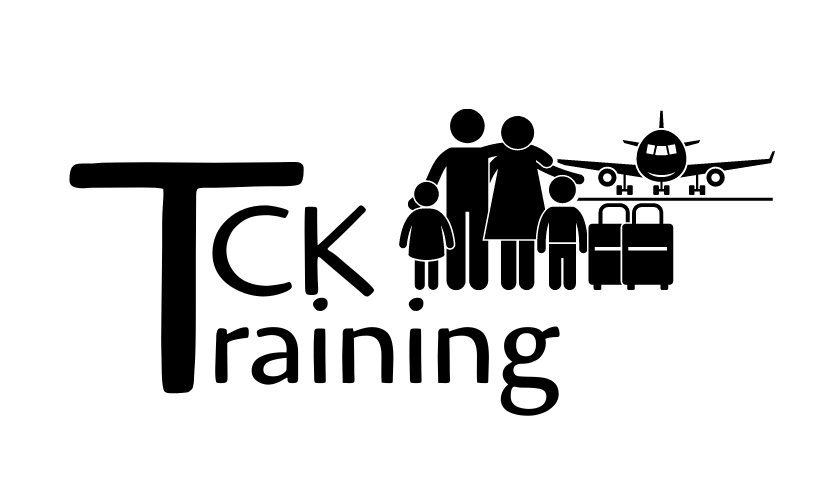Caution and Hope for Students in Christian International Schools
Tanya crossman
When TCK Training released our white paper, Caution and Hope: The Prevalence of Adverse Childhood Experiences in Globally Mobile Third Culture Kids, we knew we were only beginning to scratch the surface of what we could learn from the data we had collected from 1,904 individuals who completed our 2021 survey on developmental trauma in globally mobile Third Culture Kids. This is part of a series of blog posts that looks a little deeper at certain sub-groups represented in the data.
Caution and Hope for Students in Christian International Schools
In our survey of nearly 2,000 people who grew up internationally, we discovered that 16% (nearly 1 in 5) of those who attended Christian international schools growing up were at high risk of adverse outcomes in adulthood. In this blog post, we go through the data from our white paper "Caution and Hope" that applies specifically to students in Christian international schools: things that are hard to hear, along with what we can do to cultivate long term thriving for children growing up in the world of Christian international schools.
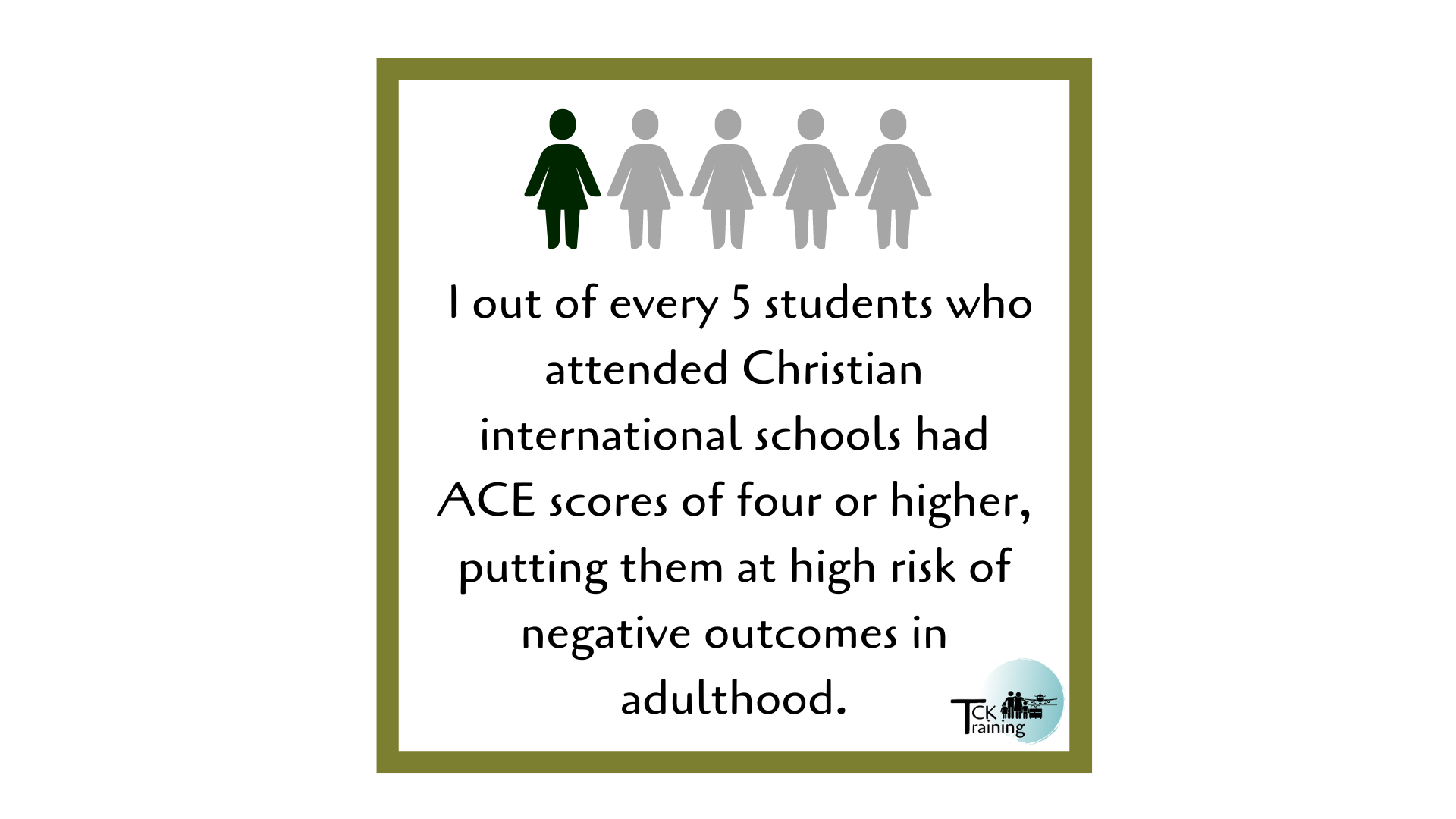
One of the demographics we used to sort the results from our 2021 survey of Adverse Childhood Experiences among TCKs was core educational experience. We asked respondents to list all types of schooling they received, as many TCKs move between schools - and school types - during childhood and adolescence. We also asked them to choose one category which represented the core experience they identified with their international education. We differentiated between those who identified international schools and Christian international schools as their primary experience, creating two separate demographic categories. We defined Christian international schools as follows:
Christian international school: any international school which is run with a specifically Christian worldview. This includes both large international schools and small missionary schools. The student body may include children from non-Christian families, who choose it as the only international option available in their area, or a more cost-effective option than other international schools.
Caution and Hope: The Prevalence of Adverse Childhood Experiences in Globally Mobile Third Culture Kids
The majority of those who attended Christian international schools self-identified as missionary kids (MKs). For this reason, it is helpful to compare the statistics of Christian international school students not just to TCKs generally, but also to MKs specifically.
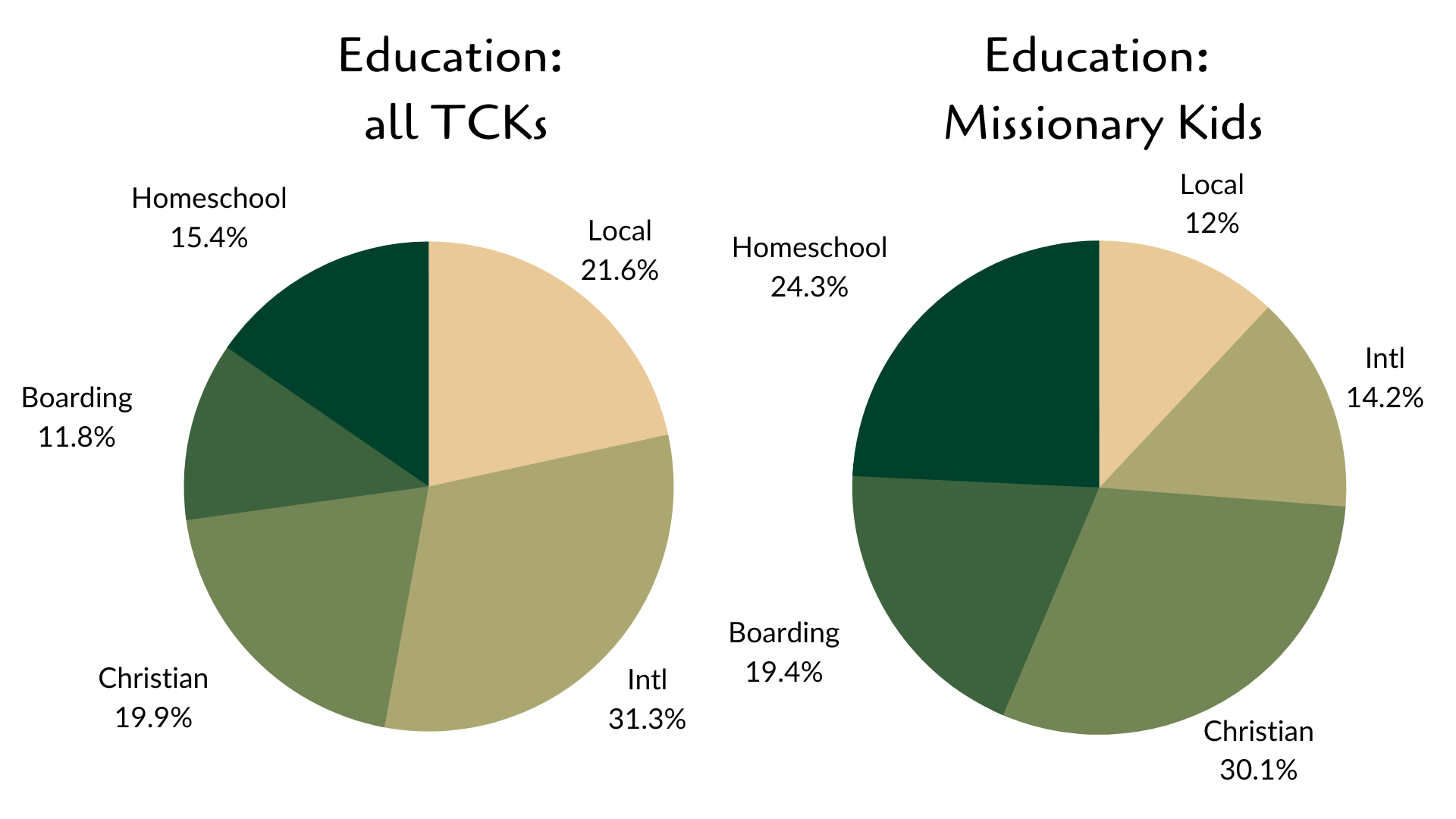
When the percentage of total TCKs is compared to school choice, it also becomes clear that MKs are more likely to choose Christian international schools. MKs made up 56% of TCKs in the sample overall, but 86% of TCKs who attended Christian international schools. On the contrary, MKs were underrepresented in the international school group.

Mobility
MKs overall had similar mobility patterns to the whole TCK sample. A little higher in some areas, but not much different. For this reason, as we consider mobility we will compare the mobility patterns of Christian international school students to the MK group only, as this is a more apt comparison.
Christian international school students had lower incidence of extreme mobility in all three metrics we looked at: countries lived in, location moves, and house moves. As we will discuss later, a lower incidence of high mobility is a positive pattern. That said, there is still a significant amount of mobility present.
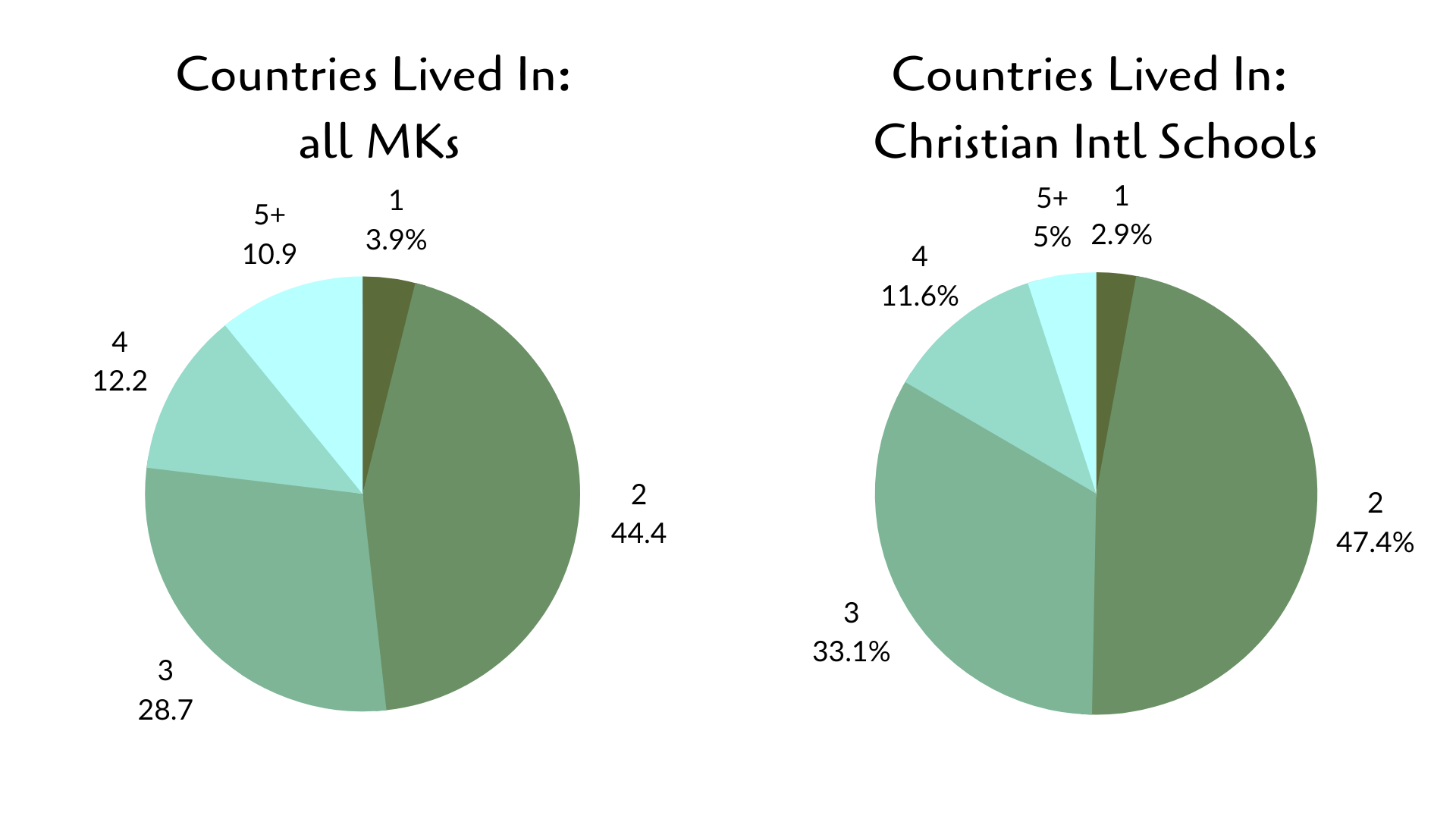
Half of Christian international school students moved location 6 or more times before age 18; this means they moved to a new city or country every three years on average throughout childhood.
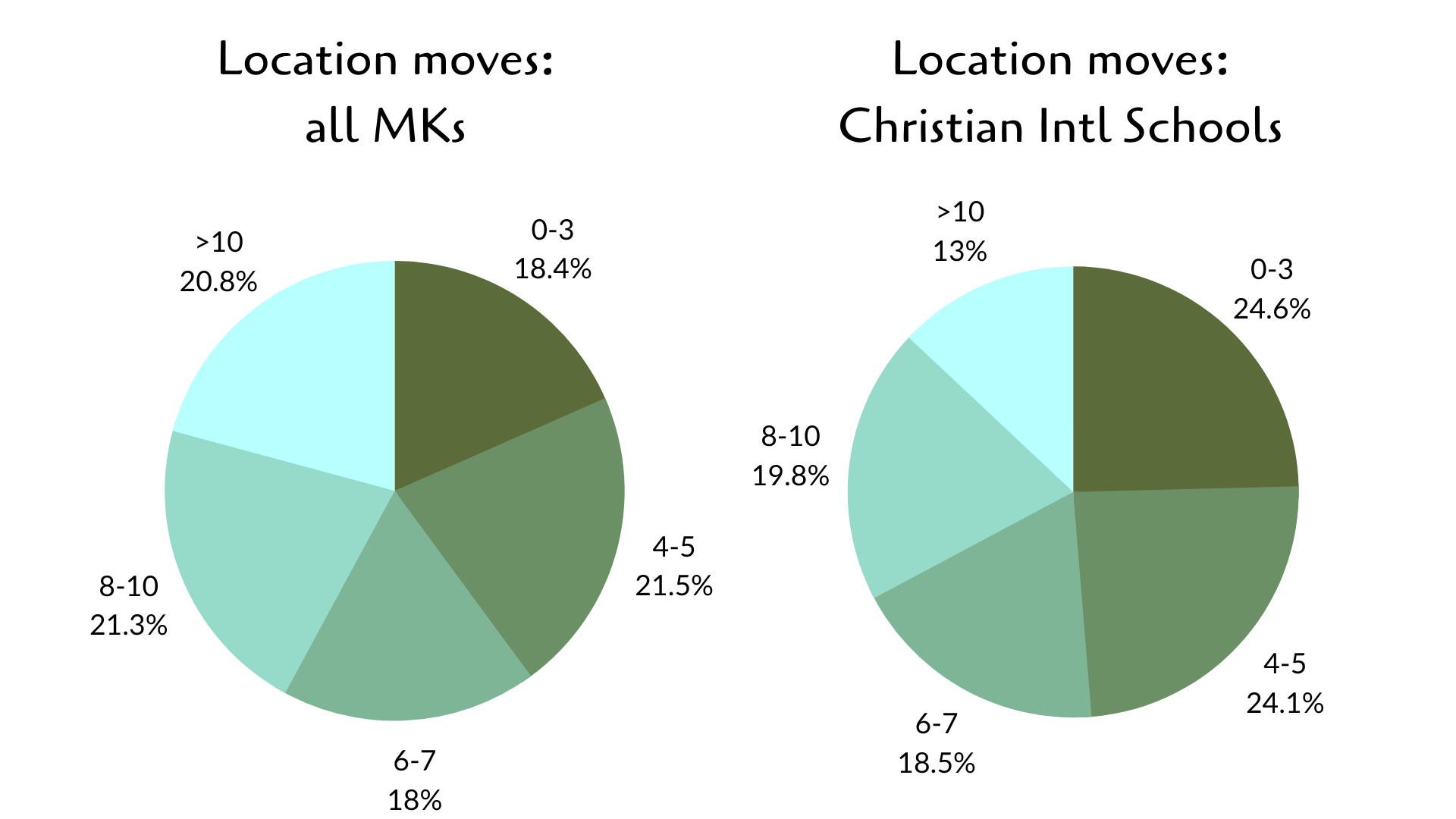
Half of Christian international school students moved house 9 or more times before age 18; this means they moved house every two years on average throughout childhood.
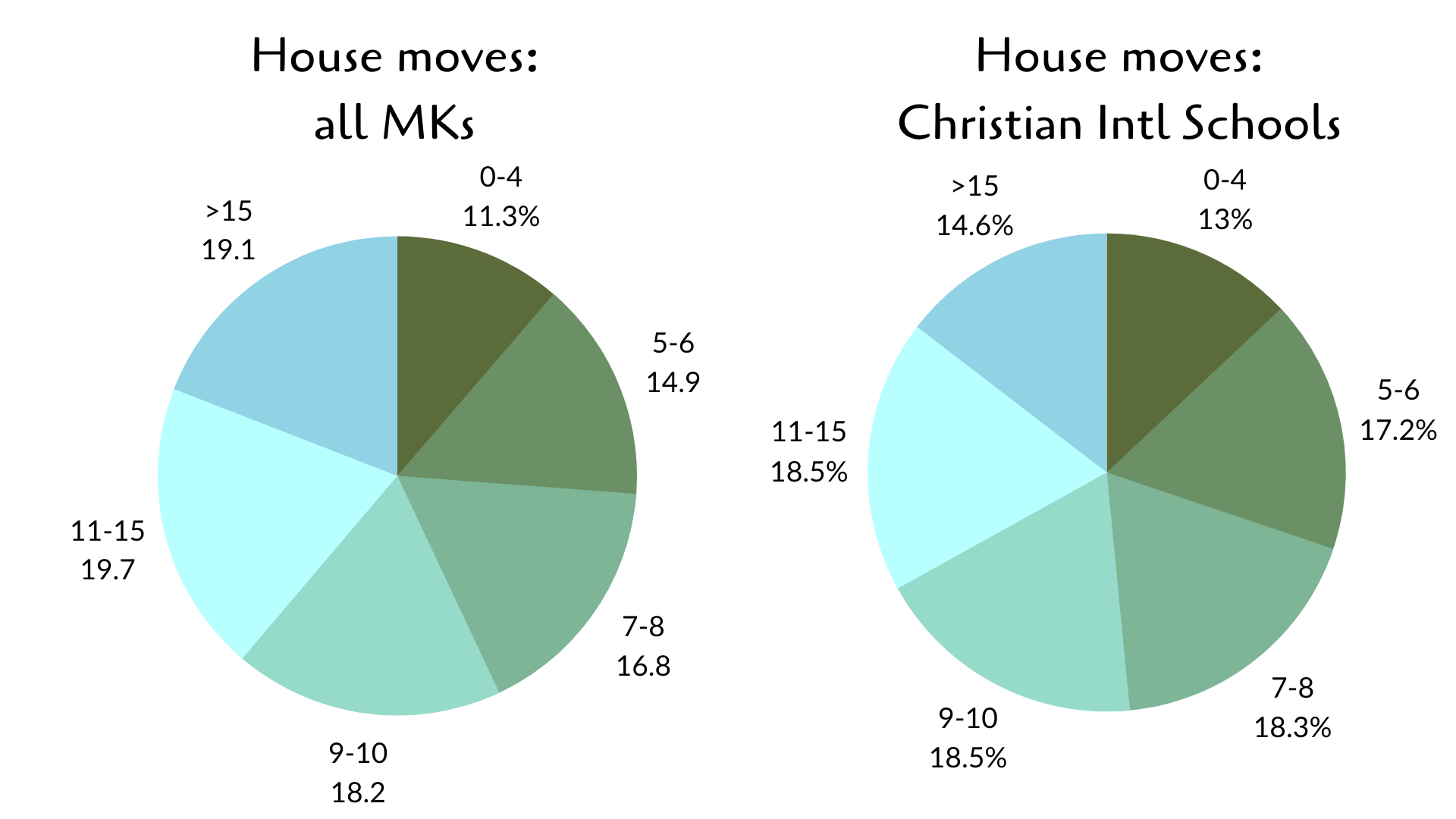
At TCK Training we consider three years the minimum time required for a complete transition on both sides of a move (arriving and departing). Half of students in Christian international school are not hitting these minimums. It also means that the other half of the student body, the “stayers,” are seeing friends leave. The whole community is at risk of unresolved grief.
Adverse Childhood Experiences
Adverse Childhood Experiences (ACEs) have been researched for decades, establishing links between high ACE scores and negative health outcomes in adulthood. The number we pay most attention to is the percentage of a group with 4 or more Adverse Childhood Experiences (ACEs). In the largest study on ACEs, 12.5% of Americans had a score of 4+. In our study, 21% of TCKs generally, and 16% of Christian international school students specifically, had an ACE score of 4+. This suggests that the risk is a bit lower for Christian international school students than for TCKs generally, but still higher than for those who are geographically stable.
Adverse Childhood Experiences
Adverse Childhood Experiences (ACEs) have been researched for decades, establishing links between high ACE scores and negative health outcomes in adulthood. The number we pay most attention to is the percentage of a group with 4 or more Adverse Childhood Experiences (ACEs). In the largest study on ACEs, 12.5% of Americans had a score of 4+. In our study, 21% of TCKs generally, and 16% of Christian international school students specifically, had an ACE score of 4+. This suggests that the risk is a bit lower for Christian international school students than for TCKs generally, but still higher than for those who are geographically stable.

It is also worth noting that the ACE scores of Christian international school students, unsurprisingly, match the ACE scores of missionary kids generally quite closely.
PCEs And Preventive Care
We titled our white paper “Caution and Hope” because although it can be hard to face the reality that so many students in our communities are experiencing extreme mobility, unresolved grief, and Adverse Childhood Experiences, there are proven practical ways to support them.
There is also so much preventive care we can do to help children process the experiences of grief and loss that go along with transition and mobility, and living in communities where their friends also move away. A key finding of “Caution and Hope” was that when extreme mobility is present, the rate of high-risk ACE scores rose from 1 in 5 TCKs to 1 in 3. Christian international schools are critically placed to provide essential transition care for those arriving, those leaving, and those staying.
PCEs And Preventive Care
We titled our white paper “Caution and Hope” because although it can be hard to face the reality that so many students in our communities are experiencing extreme mobility, unresolved grief, and Adverse Childhood Experiences, there are proven practical ways to support them.
There is also so much preventive care we can do to help children process the experiences of grief and loss that go along with transition and mobility, and living in communities where their friends also move away. A key finding of “Caution and Hope” was that when extreme mobility is present, the rate of high-risk ACE scores rose from 1 in 5 TCKs to 1 in 3. Christian international schools are critically placed to provide essential transition care for those arriving, those leaving, and those staying.
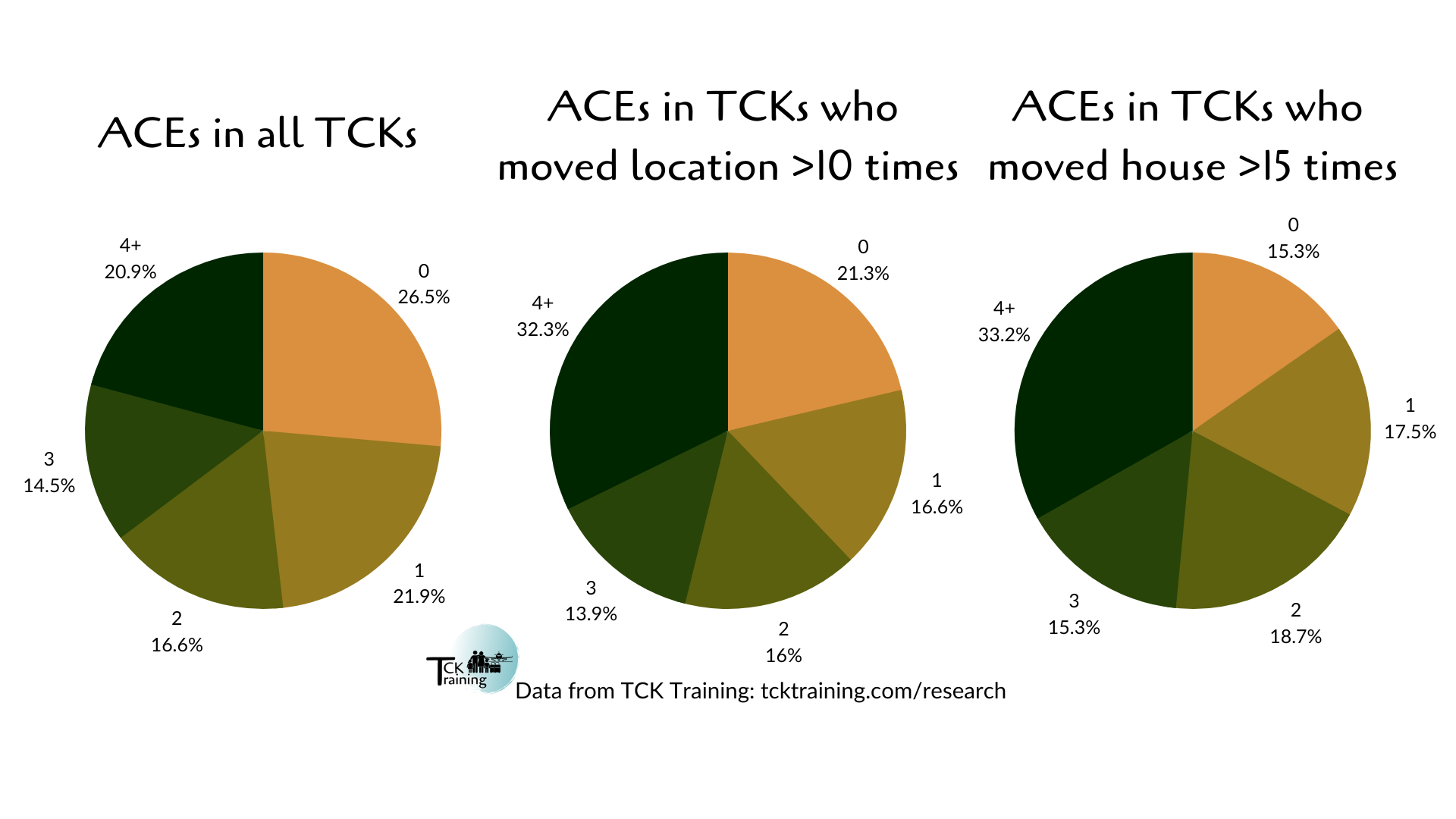
A child who goes through many Adverse Childhood Experiences (ACEs) can still thrive in adulthood if their childhood is also filled with Positive Childhood Experiences (PCEs). There are seven types of PCEs. Three of the seven are based in the home; four of the seven are based in experiences of community outside the home. Christian international schools are often hubs for community, providing places for not only students but also entire families to meet and befriend one another. This potential role in providing a protective buffer for long term student wellbeing should not be underestimated.
Bethell and her coworkers found that having higher counts of PCEs was associated with 72% lower odds of having depression or poor mental health overall as an adult; that those with higher levels of positive experiences were over 3.5 times more likely to have healthy social and emotional support as an adult; and that accumulation of the seven PCEs shifted the outcome positively in adulthood.
Caution and Hope:
The Prevalence of Adverse Childhood Experiences in Globally Mobile Third Culture Kids
Many schools are already providing elements of preventive care and protective factors, without necessarily understanding how crucial these elements are to the long term health and wellbeing of their students. More importantly, the wider school community is often desperately in need of information that educators may already have access to. Making education and training available to parent groups and others who form the community around students has a large impact on student wellbeing, both in the short and long term.
TCK Training is here to help. We have curricula, workshops (in-person and virtual), training (live and asynchronous), community groups, memberships, and everything else you need to support staff, students, parents, and your wider community.
TCK Training is here to help. We have curricula, workshops (in-person and virtual), training (live and asynchronous), community groups, memberships, and everything else you need to support staff, students, parents, and your wider community.
Empty space, drag to resize
Related blog post:
Other blog posts in this series:
Other blog posts in this series:
About the Author
Tanya Crossman grew up in Australia and the US before moving to China at age 21; she has worked with TCKs for 20 years. She is the Director of Research and International Education at TCK Training.
